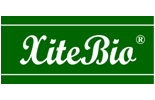As we quickly approach planting season for winter wheat, it’s a good time for a refresher on the importance of using a P-solubilizing Plant Growth Promoting Rhizobacteria (PGPR). In this week’s edition of Growing Possibilities, we’ll explore the advantages of winter wheat and the role inoculants and/or ag-biologicals can play in a successful crop.
Winter wheat offers many advantages as a rotational crop. It can prevent erosion and control weed growth when used as a cover crop. Winter wheat also enhances the cycling of major macronutrients like nitrogen (N), phosphorus (P), and potassium (K), and can serve as a nitrogen feeder for subsequent crops (1). By adding winter wheat to the rotation alongside corn and soybean, farmers can increase yields, build drought resilience, and improve soil health. A study conducted in Elora, Ontario, showed that corn yields increased by 15% and soybean yields by 13% when winter wheat was added to the rotation (2).
There are also visible benefits to spring wheat yields under certain conditions when winter wheat is included in the rotation. A study conducted near Selkirk, Manitoba, under drought-like conditions, found that winter wheat produced 60 bu/ac, while spring wheat yielded 45 bu/ac (3). Straw production tends to be higher with winter wheat, providing a secondary source of revenue. Using PGPR is key to combating stressors such as drought, salinity, and pathogen attacks (4).
Winter wheat has no seed dormancy and should be sown into stubble that can retain snow. Seeding should occur early enough to allow the crop to reach the 2–3 leaf stage before snowfall (5). PGPR supports early plant growth, which is vital in these conditions. Early post-emergence application strengthens root development and enhances overall plant vigor (6).
At XiteBio Technologies, XiteBio® Yield+ is our PGPR-powered product designed for winter wheat, as well as other cereals, oilseeds, and legumes. Applied during early post-emergence, PGPR can be easily incorporated into your tank mix alongside herbicides and sprayed together. Using PGPR inoculants and ag-biologicals at this stage is a strategic move to boost crop yield, enhance soil health, and strengthen plant resilience. These beneficial microbes support nutrient uptake, improve tolerance to environmental stress, and foster balanced microbial interactions in the rhizosphere. As ongoing research continues to uncover their full potential, early post-emergence application offers farmers a powerful tool for increasing productivity while advancing sustainable agriculture.
If you have any questions about XiteBio® Yield+ or any of our other products, please contact one of our sales agronomists by visiting xitebio.com or calling 1-855-XITEBIO (948-3246).
References
- https://www.sare.org/publications/managing-cover-crops-profitably/nonlegume-cover-crops/winter-wheat/
- https://ontariograinfarmer.ca/2022/02/01/winter-wheat-benefits/
- https://ag.ducks.ca/stories/economic-benefits-to-winter-wheat-even-in-a-dry-year/
- https://annalsmicrobiology.biomedcentral.com/articles/10.1007/s13213-011-0211-z
- https://microbiologyjournal.org/plant-growth-promoting-rhizobacteria-pgpr-prospective-and-mechanisms-a-review/
- https://www.researchgate.net/publication/332849572_Plant_Growth_Promoting_Rhizobacteria_PGPR_A_Novel_Agent_for_Sustainable_Food_Production


